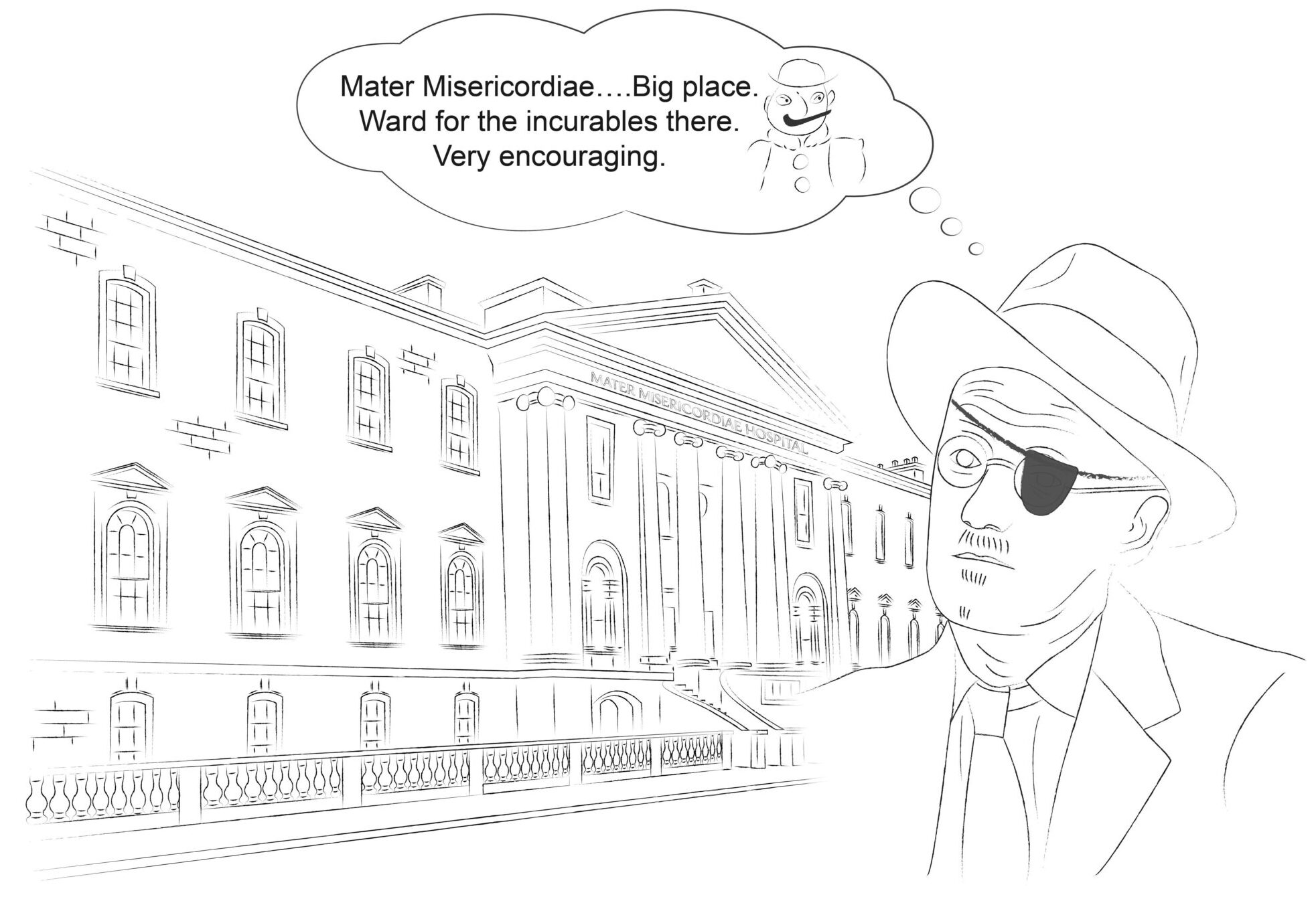Fergus Shanahan
Cork, Ireland
Eamonn Quigley
Houston, Texas, United States
Making mejical history all over the show!
-James Joyce, Finnegans Wake (FW) 514.2-31

James Joyce (1882–1941) is celebrated for his portrayal of the lives of ordinary people in his native city. Like many of the great writers, he had a lot to say about illness and disease. He was acquainted with many medics, twice enrolled in medical school, and liberally sprinkled his works with references to medical science.2-4 A knowledge of medicine is not uncommon among accomplished authors, but Joyce stands alone for his creative vocabulary with “lashons of languages” that “would wipe alley english spooker, multaphoniaksikally spuking, off the face of the erse.”1
Unlike most of his predecessors and contemporaries who refrained from reference to basic bodily functions, Joyce revelled in the ordinary facts of human life. Most of the episodes in Ulysses—his “epic of the human body”—are linked to a body part or physiological process, including the enunciation of Leopold Bloom’s commodious fart (“Pprrpffrrppfff”) and a comic comparison of the arcs of urine from two simultaneously micturating men of different ages. Laced with humor (“well, he was shocking poor in his health, he said, with the shingles falling off him”), Joycean word wizardry sparkles with beauty, as in a delightful description of swallowing: “the faery pangeant fluwed down the hisophenguts, a slake for the quicklining, to the tickle of this tube and the twobble of his fable.”1
Alluding to the death of his own mother in the Telemachus episode of Ulysses, Joyce recorded one of the great literary expressions of grief: “Pain, that was not yet the pain of love, fretted his heart. Silently, in a dream she had come to him after her death, her wasted body within its loose brown graveclothes giving off an odour of wax and rosewood, her breath, that had bent upon him, mute, reproachful, a faint odour of wetted ashes.”5
Literary descriptions have a place in clinical medicine, particularly for depicting complex symptoms, signs, and syndromes.6,7 For example, continual grasping at bedclothes or at imaginary objects is a late feature of the dying process, medically known as carphology or floccillation, but more accurately described in familiar terms by authors such as Shakespeare, Tolstoy, Flaubert, and others.6 Joyce’s rendition is beautifully succinct: “Her cerebral lobes are not functioning. She calls the doctor….and picks buttercups off the quilt.”5
Clever Joycean word-pictures paint the “pandemonium of ills” within society. For example, has there ever been a more memorable description of chronic bronchitis (“a coughball of laughter leaped from his throat dragging after it a rattling chain of phlegm”)?5 Likewise, urban squalor (“rows of flimsy houses with gaping doors”), malnutrition (“the country full of rotten teeth and rotten guts”) and infectious diseases including the social afflictions (“some chap with a dose burning him”) are acutely observed during the Bloomian odyssey.5
Dismayed at the insensitivity of medical students to a patient’s suffering, Leopold Bloom wonders how “the mere acquisition of academic title should suffice to transform in a pinch of time these votaries of levity into exemplary practitioners,” whereas the whores of Nighttown are more dismissive: “Trinity medicals. Fallopian tube, all prick and no pence.”5
Throughout his adult life, Joyce had many brushes with the medical profession and his playful mockery of doctors is unsparing: “Humane doctors, most of them” (Figure).5 He required ten operations for complications of iritis (describing himself as “an international eyesore”), complained continually of the “cursed dyspepsia” and died from the complications of a peptic ulcer.8 He had an informed understanding of science, was skeptical of psychological explanations for illness, and ridiculed psychoanalysis in Finnegans Wake (“grisly old Sykos…yung and easily freudened….I can psoakoonaloose myself any time I want (the fog follow you all!) without your interferences…”).1
Focusing on public rather than personal ill-health, Joyce’s portrayal of the lives of children is especially sensitive.9 Despite oppressive censorship, he succeeded in addressing the corruption of childhood innocence in Dubliners, including the pervasive influence of Catholic clerics, which was not always entirely wholesome.10 However, Joyce is fair; his priests have virtues as well as vices (“you get some bad ones and you get some good ones”). Abuse of children, then and now, is more likely to occur inside than outside the home. To feel the terror of domestic violence for children, Joyce used the words of a child. In the story Counterparts, a little boy is left alone at home to cope with his drunken father and cries: “Don’t beat me, pa! And I’ll…I’ll say a Hail Mary for you….I’ll say a Hail Mary for you, pa, if you don’t beat me…I’ll say a Hail Mary…”
Recorded facts present a partial picture of public health. To understand the lived experience—what it was really like—the words of contemporary authors offer a richer story. While some questioned the liberties Joyce took with the English language, he was intent on circumventing the insufficiency of language to describe the whole story.
References
- Joyce, J. Finnegans Wake. First published 1939. London: Penguin Classics edition, 2000.
- Shanahan F, Quigley EMM. Medicine in the age of Ulysses. Perspect Biol Med 2006;49:276-285.
- Shanahan F, Quigley EMM. James Joyce and gastroenterology. Clin Med 2008;8: 632–33.
- Lyons JB. James Joyce and medicine. Dublin: Dolmen Press. 1973.
- Joyce, J. Ulysses. First published 1922. London: Penguin Classics edition, 2000.
- Shanahan F, Houlihan C, Marks JC. Q J Med 2013;106:93-94.
- Shanahan, F. The Language of Illness. Dublin. Liberties Press, 2020.
- Ellmann, R. 1982. James Joyce, rev. ed. Oxford: Oxford Univ. Press.
- Shanahan F, Quigley EM. History Ireland 2010;18:30-31.
- Joyce, J. Dubliners. First published 1914. Wordsworth Classics edition, 1993
FERGUS SHANAHAN and EAMONN QUIGLEY are both gastroenterologists who share an interest in James Joyce and occasionally write for non-Joyceans. They have collaborated on many medical issues and both love people, words, and microbes.

Leave a Reply